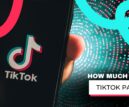Best Times To Post On TikTok In 2025: Maximize Engagement With Data-Driven Strategies
Subhasree Nag, 15 hours ago

Subhasree Nag, 15 hours ago

Subhasree Nag, 5 days ago

Subhasree Nag, 6 days ago

Subhasree Nag, 7 days ago

Subhasree Nag, 1 week ago

Subhasree Nag, 1 week ago


In today’s fast-paced digital landscape, grabbing attention is more challenging than ever.
Businesses need to utilize every tool in their arsenal to stand out and engage their audiences. Traditional social media posts—be it text or static images—are not always enough to capture the ever-wandering eyes of modern consumers.
This is where the power of animation comes in. Animated content isn’t just for Saturday morning cartoons or mega-corporations with endless marketing budgets.
Animation refers to the process of photographing successive models and drawings in order to make an illusion of sequential movements. Our eyes can retain a particular image for only 1-10 seconds. This is why, when several images appear in quick succession, it tends to give us an illusion of the picture moving.
When it comes to conventional animation, a picture is painted or drawn on transparent celluloid sheets. These are later photographed, a classic example of which is early cartoons. At present, a lot of animated movies are created with the use of CGI or computer-generated imagery.
Now that you know what is animation, let me give you a quick look at different types of animation. While some of them might be perfect for a business setting, others are much preferable for cinematography purposes. Here are a few popular types of animation:
This has to be one of the most primitive forms of film animation. As already mentioned, in this animation, objects are drawn on transparent sheets. For creating the animation sequence, every animator has to draw the frames.
It has a similar mechanism to a flip book but on a grander scale. From Aladin to The Lion King, all primitive cartoons are made with the use of conventional animation.
Secondly, anime can be considered a subdivision of conventional animation, but it basically refers to animations coming from Japan. The country has been widely recognized as a powerhouse of animation.
A distinctive attribute of animation is that it is animated on 3s. Hence, for every three frames, there has to be a new image. Akira is one of the most famous anime characters.
Motion graphics represent digital graphics that give us an illusion of motion. Most ads and title sequences in movies make use of motion graphics. Its main goal is to communicate the eventual storyline to the viewer.
These are usually combined with vocals for multimedia projects. In business sectors, they are used with texts as a key player.
This type of animation usually falls under traditional animation, which is found in early Disney movies. From Pinnochio to Beauty and the Beast, every Disney movie started its movie journey with 2D animation.
But something also known as Vector-based animation is actually 2D without any traditional elements.
At present, computer animation or 3D remains one of the most prevalent animation types. It is not very easy to opt for 3D animation- even though all your competitors are using it for boosting engagement.
In 3D movies, the animator makes use of a program for moving the body parts of the character. They fix their digital frames when every part of the character falls in the right position.
From small businesses in retail to enterprises in technology and even law firms, animating your social media strategy can significantly boost engagement and reach.

Here’s how.
Social media is a noisy place, flooded with a torrent of content from brands competing for a slice of the consumer’s attention. Among this sea of static, how do you make sure your message gets across? The answer lies in the dynamic, eye-catching nature of animated content.
For instance, legal animation—a concept one might not usually associate with ‘engaging’—can bring complex legalese to life, making it understandable and relatable for your audience.
The motion and color of animation arrest the eye, ensuring that your content not only stands out but also gets consumed and shared.
Telling a compelling story is at the heart of any successful marketing strategy. Animation allows you to craft narratives that are not only engaging but also easier to digest.
For example, a 30-second animated explainer video can condense the complexities of a product’s use case into a format that is immediately relatable and easily understood.
This facilitates better engagement, as followers are more likely to interact with and share content that they find personally relevant or beneficial.
Especially pertinent to industries like healthcare, technology, and engineering, animation can simplify complex topics.
An animated infographic or a short video can make even the most complicated subjects accessible to a broader audience. By reducing barriers to understanding, you increase the likelihood of your message being shared, thus widening your reach.
The expressive nature of animation allows you to create content that resonates emotionally with your audience. Be it humor, nostalgia, or excitement, animation can evoke a range of emotions that static images or text alone might struggle to achieve.
Emotional engagement is a key factor in not just attracting but also retaining your audience’s attention.
Contrary to popular belief, animation doesn’t have to be prohibitively expensive. Various tools and platforms offer templates and drag-and-drop features that can help even the most non-technical person create simple yet effective animations.
This means that businesses of all sizes can take advantage of this medium without breaking the bank.
Animation is versatile and easily adaptable across different social media platforms. A short animated video that goes viral on TikTok can be repurposed for Instagram Stories, Facebook posts, or Twitter snippets. This adaptability saves time and effort, making your overall social media strategy more efficient.
The benefits of incorporating animation into your social media strategy are manifold. From breaking through the clutter to emotional engagement and cost-effectiveness, animated content offers a versatile and impactful way to communicate your brand message.
So, if you haven’t already, it’s time to put the ‘motion’ in ‘promotion’ and start animating your social media strategy, no matter what industry you’re in.
Read Also:
Abdul Aziz Mondol is a professional blogger who is having a colossal interest in writing blogs and other jones of calligraphies. In terms of his professional commitments, he loves to share content related to business, finance, technology, and the gaming niche.

Subhasree Nag, 15 hours ago

Subhasree Nag, 5 days ago

Subhasree Nag, 6 days ago

Subhasree Nag, 7 days ago